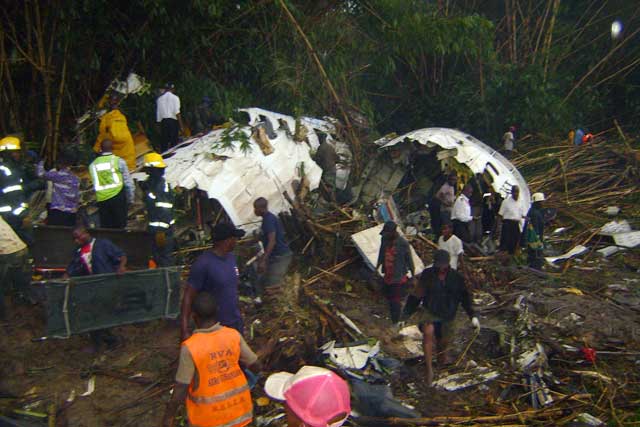Simon Calder: The key to safer travel - know your micromort
The man who pays his way

Your support helps us to tell the story
From reproductive rights to climate change to Big Tech, The Independent is on the ground when the story is developing. Whether it's investigating the financials of Elon Musk's pro-Trump PAC or producing our latest documentary, 'The A Word', which shines a light on the American women fighting for reproductive rights, we know how important it is to parse out the facts from the messaging.
At such a critical moment in US history, we need reporters on the ground. Your donation allows us to keep sending journalists to speak to both sides of the story.
The Independent is trusted by Americans across the entire political spectrum. And unlike many other quality news outlets, we choose not to lock Americans out of our reporting and analysis with paywalls. We believe quality journalism should be available to everyone, paid for by those who can afford it.
Your support makes all the difference.You may not even have noticed the brief news story on page 32 of The Independent last Saturday, headlined "53 dead as plane crashes at airport"; the toll later rose to 74. This tragically familiar story involved an old jet on an African domestic route – this time from Kinshasa in the Democratic Republic of Congo to Kisangani – crashing in poor weather. The crash, "after a very bad time that day", according to Hewa Bora Airways' official statement, reflects a grisly reality: the poorer a nation, the higher the travel risks.
Someone who did take note was a man who had, within the previous two weeks, flown twice on the same Boeing 727 to and from the same airport: Tony Wheeler, co-founder of Lonely Planet. He has just returned from the country abbreviated to DRC after a trip to see the Nyiragongo volcano, which necessitated flying across the country.
"How did I feel when I heard the news of the crash? Definitely an 'oh s***' moment," he says.
Hewa Bora Airways (the name is Swahili for "good wind") is one of one of 32 DRC airlines that is "subject to an operating ban" in the European Union. Others on the blacklist include Busy Bee Congo and the Safe Air Company, whose very name is a hostage to fortune. But you are most unlikely to find yourself travelling aboard any of these airlines. Indeed, if you plan to fly this summer on a jet belonging to a UK or Irish carrier, you are choosing the very safest form of transport.
To adopt the concept used on building sites, there have been 8,224 accident-free days since the last fatal crash – the 1989 Kegworth disaster involving a British Midland Boeing 737.
In contrast, there have been no days since the last fatal road accident in the British Isles; every year, the death toll is equivalent of 10 fully loaded jumbo jets. Yet many more people are fearful of flying than they are of driving. So what's going on? "Feelings and emotions dominate, rather than the statistics about the risk per mile or per journey," says Professor David Spiegelhalter of Cambridge University. As Winton Professor of the Public Understanding of Risk, he is immersed in how you and I assess the dangers of daily life, and going on holiday.
"Some people are just frightened by the whole idea of flying. A lot of this is influenced by fears of lack of control: people would rather drive than fly although the risks are enormously higher."
ppp Perhaps a short tutorial in risk may persuade you to pay a premium for safety. The "micromort" is a measure that represents a one-in-a-million chance of dying. You can drive about 250 miles for each micromort. When walking or cycling that falls to about 17 miles. The riskiest means of transport is brutally clear: you can go only six miles on a motorbike for a one-in-a-million risk of a fatal accident. In contrast, you can travel for many thousands of miles by air or train.
"I go out of my way to avoid travelling by car, because I know the risks per mile are so much higher than rail," says Professor Spiegelhalter. "No passengers been killed on a moving train since February 2007. They are staggeringly safe. But people don't feel that way. One problem is when there is an accident on a train, very occasionally, it gets enormous publicity. The rarer things become, the more coverage they get when they happen."
To read Tony Wheeler's account of travels in DR Congo (written before the Hewa Bora Airways crash), see www.bit.ly/TonyCongo
Adventures with the man who should know better
Does the ace statistician Professor David Spiegelhalter, the man who monitors how well we all deploy common sense, ever put probability aside?
"Yes. I'm one of those middle-aged people who goes skiing even though I'm not very good. I probably take more risks in a week's skiing then I do for the rest of the year in terms of bodily injury." He has also climbed in the Dolomites (photographic evidence shown above).
But, he says, there is reason to such apparently irrational behaviour. "I terrified myself once doing tandem paragliding off a mountain – but it was so exciting. Taking some risks after a bit of consideration is part of life and, particularly, part of holidays. Given our boring old lives during the year I'm not surprised that people do slightly outrageous things when they're on holiday. And they remember them."
Join our commenting forum
Join thought-provoking conversations, follow other Independent readers and see their replies
Comments